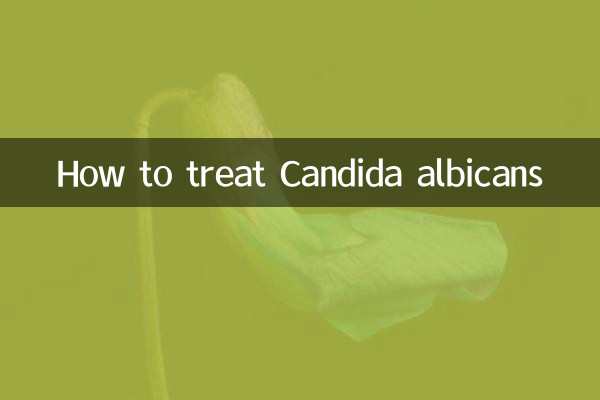How to treat Candida albicans
Candida albicans (Candida albicans) is a common fungus that is widely found in the mouth, digestive tract, vagina and other parts of the human body. Under normal circumstances, it coexists with the human body and does not cause disease. However, when the body's immunity is weakened or the flora is imbalanced, Candida albicans may overproduce and cause infections such as oral candidiasis, vaginal candidiasis, or systemic candidiasis. The following are treatments for Candida albicans infections and related hot topics.
1. Common symptoms of Candida albicans infection

Symptoms of Candida albicans infection vary depending on the site of infection, but here are some common symptoms:
| Infection site | Main symptoms |
|---|---|
| oral cavity | White patches, pain, burning sensation, abnormal taste |
| vaginal | Itching, white discharge, redness and swelling, painful urination |
| skin | Erythema, itching, scaling |
| systemic infection | Fever, chills, organ dysfunction (such as lung and blood infections) |
2. Treatment of Candida albicans
Treating a Candida albicans infection usually involves choosing the appropriate antifungal medication based on the location and severity of the infection. The following are common treatments:
| Type of infection | Treatment | Commonly used drugs |
|---|---|---|
| Oral candidiasis | topical antifungal medications | Nystatin lozenges, clotrimazole oral patches |
| vaginal candidiasis | Topical or oral antifungal medications | Clotrimazole suppositories, fluconazole oral tablets |
| skin infection | Topical antifungal ointments | Ketoconazole cream, miconazole cream |
| systemic infection | intravenous antifungal drugs | Amphotericin B, caspofungin |
3. Measures to prevent Candida albicans infection
The key to preventing Candida albicans infections is maintaining a balanced immune system and good hygiene. Here are some suggestions:
1.Maintain oral hygiene: Brush your teeth regularly, use mouthwash, and avoid excessive sugar intake.
2.Rational use of antibiotics: Avoid long-term or overuse of antibiotics to avoid destroying normal flora.
3.Wear breathable clothing: Choose cotton underwear to avoid the growth of fungi in a humid environment.
4.Enhance immunity: Balanced diet, regular work and rest, and proper probiotic supplementation.
4. Recent hot topics and research progress related to Candida albicans
Recently, some new progress has been made in the research and treatment of Candida albicans. The following are some hot topics:
| field of study | Progress content |
|---|---|
| antifungal drug resistance | Studies have found that some Candida albicans are resistant to fluconazole, and new antifungal drugs need to be developed. |
| probiotic treatment | Certain probiotics (such as lactic acid bacteria) may inhibit the overgrowth of Candida albicans by regulating the balance of flora. |
| Immunotherapy | Discover new ways to fight fungal infections by boosting host immunity. |
5. Summary
Candida albicans infection is a common fungal disease, and treatment varies depending on the location and severity of the infection. Mild infections can be controlled with topical antifungal medications, while systemic infections may require intravenous medications. Preventive measures include maintaining hygiene, rational use of antibiotics, and strengthening immunity. Recent research has focused on areas such as drug resistance, probiotics and immunotherapy, providing new directions for future treatments.
If you suspect that you are infected with Candida albicans, it is recommended to seek medical treatment promptly to avoid self-medication that may worsen the condition.

check the details

check the details